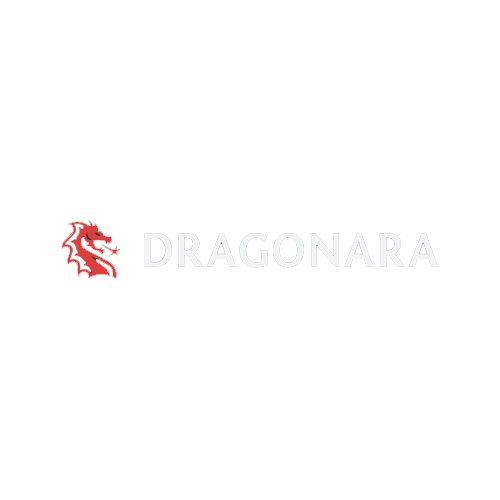Prime Rate Federal Funds Rates Discount Rate Fed Fund Reserve Lending COFI
Therefore borrowers with a higher credit score can receive a lower margin while borrowers with a lower credit score will receive a higher margin. In a variable rate credit product, the margin remains the same over the life of the loan; however, the variable rate is adjusted when there is a change in the underlying indexed rate. The prime rate, https://www.1investing.in/ as reported by The Wall Street Journal’s bank survey, is among the most widely used benchmark in setting home equity lines of credit and credit card rates. It is in turn based on the federal funds rate, which is set by the Federal Reserve. The COFI (11th District cost of funds index) is a widely used benchmark for adjustable-rate mortgages.
Wall Street Journal prime rate
Since individual consumers do not have the same resources, banks typically charge them the prime rate plus a surcharge based on the product type they want. The prime rate is often directly impacted by the federal funds rate and the discount rate set by the Federal Reserve. The federal funds rate is the rate that banks charge to lend each other overnight loans, while the discount rate is the interest rate at which banks can borrow directly from the federal reserve. To put it in less fancy terms, the prime rate is the average interest rate that the largest banks in America are currently charging their most financially-sound customers for short-term loans.
Other Bonds & Rates Data
If you’re in the market for a new variable rate mortgage or a personal loan, understanding the prime rate and how it works can give you a better grasp on how much you’ll pay and the best time to get a loan. For one example of a prime rate’s influence, consider a Bank of America credit card borrower with a credit card balance that is subject to a variable annual percentage rate. The borrower’s margin is 15.99% plus the indexed rate, which is based on the bank’s prime rate. For the borrower, this means that if the prime rate is 3.25%, their interest rate will be 19.24%. If the bank’s prime rate increases to 4.25%, their interest rate would increase to 20.24%.
How Is the Prime Rate Determined?
That’s why seeing the impact of a prime rate hike might not be immediately obvious. However, over time, the prime rate does push consumer rates in the same direction. By keeping an eye on the prime rate trends, you can get a sense of how expensive it will be to borrow and you can plan around any changes.
Chart of WSJ Prime Rate with Forecast
The WSJ prime rate gets its name from The Wall Street Journal’s practice of polling the 10 largest U.S. banks to see what their prime lending rate is. When seven or more of the 10 banks polled change their prime rate, The Wall Street Journal publishes a new prime rate. Bankrate.com is an independent, advertising-supported publisher and comparison service. We are compensated in exchange for placement of sponsored products and services, or by you clicking on certain links posted on our site. Therefore, this compensation may impact how, where and in what order products appear within listing categories, except where prohibited by law for our mortgage, home equity and other home lending products.
The U.S. economy is made up of billions of little everyday moments of consumers making decisions and responding to incentives, all trying to maximize their wealth and happiness. Understanding the basics of how interest rates work can help you make better decisions in your financial life. That’s because the WSJ Prime Rate is a key indicator of the cost of consumer borrowing. If you have a credit account, particularly a variable one, the interest rate you pay is affected by the prime rate.
The prime rate even has effects on the stock market, as businesses tend to tighten their purse strings when interest rates are high. Liquidity has a way of drying up when interest rates go up as the economy begins to slow down. Depending on your investing style, it may make for a good time to “buy the dip” if you can get a good deal on the stock of a well-established company whose shares are experiencing a price slide. Just be prepared to ride out the economic rut, as shares may dip or move sideways until things begin to even out. The WSJ Prime Rate is essentially the base interest rate that banks are charging borrowers, and it’s referenced by lenders and borrowers alike. It’s published each day by the Wall Street Journal, and it is an important method for people to keep track of the interest rates that banks are charging for loans and credit lines.
- On the other end of the spectrum, a bank’s very best borrowers may be able to negotiate lower than the prime interest rate.
- That’s because the WSJ Prime Rate is a key indicator of the cost of consumer borrowing.
- Instead, many financial institutions calculate their rates by combining the U.S. prime rate with various percentages based on perceived borrower risk.
- Banks also take into account your creditworthiness—the more likely you are to pay them back, the lower the rate they would charge and vice versa.
- Once a bank changes its prime rate based on the new federal funds rate, it will then start adjusting rates for many of its other lending products in the same direction.
Traditionally, the rate is set to approximately 300 basis points (or 3 percentage points) over the federal funds rate. The Federal Open Market Committee (FOMC) meets eight times per year wherein they set a target for the federal funds rate. “Best in this sense are the borrowers with the least risk of default,” says Jeanette Garretty, chief economist and managing director at Robertson Stephens, a wealth management firm in San Francisco. It’s usually the lowest interest rate banks will charge and is a benchmark to determine interest rates for other products, like lines of credit, credit cards and small business loans. Many borrowers and investors alike also use the Wall Street Journal’s prime rate as a sort of economic indicator.
The third-party sites are not under the control of Askmoney and Askmoney is not responsible for the content of any third-party site. The offers appearing on this site may be from partners which Askmoney receives compensation for being listed here. This compensation may impact how and where products appear on this site (including, for example, the order in which they appear). These offers do not represent all offers that may be available to you. The WSJ Prime Rate is affected by the federal funds rate and is an indicator of the overall cost of money for banks and lenders, and of the overall functioning of financial markets. Data are provided ‘as is’ for informational purposes only and are not intended for trading purposes.
Due to the fact that money is now cheaper to borrow, many businesses will even take the opportunity to look into expansion. If the prime rate goes down, that means that it’s becoming cheaper to borrow money. Many variable accounts will state that your variable APR is a certain percentage above the prime rate. As you can see from the chart below, the prime rate has still not returned to the levels it was at before the Covid-19 recession, which were already elevated. In fact, since the end of the Covid-19 recession, the prime rate has steadily risen to the highest level it’s been at over the last 20 years.
Askmoney.com is not an intermediary, broker/dealer, investment advisor, or exchange and does not provide investment advice or investment advisory services. All content on this site is provided for general what is the formula of dividend information purposes only and does not constitute accounting, legal, tax or other professional advice. This site may contain links to third-party websites or other content for information purposes only.
This source aggregates the most common prime rates charged throughout the U.S. and in other countries. Changes in the prime rate are highly correlated with changes in the federal funds rate. The prime rate typically changes a day or so after a change in the federal funds rate. This brightened outlook can have a fairly immediate effect on the stock market as investors start anticipating bullish momentum. As interest rates drop, consumers have more money to spend, and companies begin seeing improved sales margins. This eventually leads to higher stock prices for leading companies, and many investors want to position themselves to get in on the action as early as possible.


